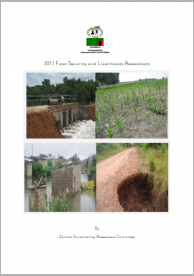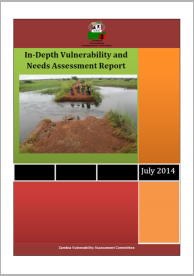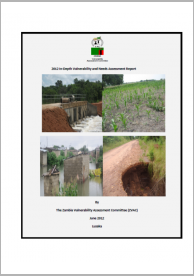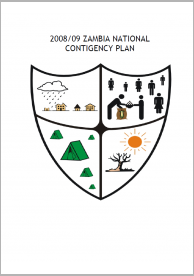
Designed to answer to chronic situations in the country and recommend the possible solutions for risk reduction and resilience building both for the short and long term in addition to support for required food where necessary.
The following is a list of all conten labeled as "Infrastructure"

Designed to answer to chronic situations in the country and recommend the possible solutions for risk reduction and resilience building both for the short and long term in addition to support for required food where necessary.

Determine the impact of the 2013/14 floods and dry spells on various sectors of the economy in 33 districts of Zambia.

Determine the impact of the 2011/12 floods on various sectors of the economy in 18 districts of Zambia.

Determine the impact of the 2009/10 floods on various sectors of the economy in 17 districts of Zambia.

Determine the impact of the 2008/9 floods on various sectors of the economy in 20 districts of Zambia.

Zimbabwe’s Climate Change Response Strategy mainstreams climate change through a sectorial approach to ensure that each sector implements adaptation and mitigation actions. Each sector will therefore be able to direct its project proposals to the appropriate funding mechanism.

This contingency plan covers the planned activities to be undertaken in 2008/09 rainy season with scenarios for the likely occurrence of floods based on the Zambia Meteorological Department (ZMD) rainfall forecasts.

Recovery Action Plan with specific activities and costing that result from the proposed recommendations in the 2009/2010 In-Depth Vulnerability and Needs Assessment Report that was undertaken in 17 districts.

This contingency plan covers the 2009-2010 rainy season with the likely scenario of having floods as a hazard. This scenario is based on the 2009-2010 rainfall forecast for the country obtained from the Zambia Meteorological Department (ZMD). It anticipates that a total population of 713,193 people (118,866 households) residing in 43 districts are likely be affected by floods.

The TEPRP is a Multi-Hazards functional plan that sets forth appropriate actions to be taken in response to an emergency or major disaster including potential or imminent threat of any event. The TEPRP aims to facilitate the coordination for the delivery of resources and services necessary to deal with the consequences of an emergency or major disaster.